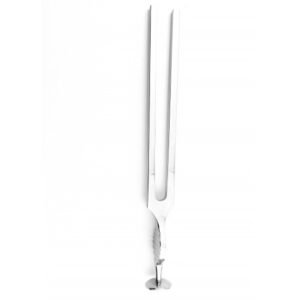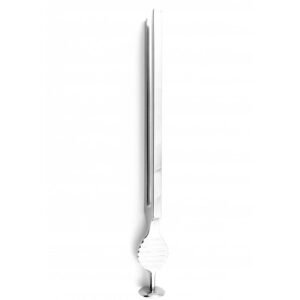In the world of medical diagnostics, there are a plethora of tools and instruments that play a crucial role in helping healthcare professionals assess patients’ conditions accurately. One such tool that may not be as commonly recognized as a stethoscope or a thermometer is the Gardiner Tuning Fork by Nazmed SMS Sdn Bhd . This unassuming device has its own unique purpose in the realm of healthcare, and today, we’ll delve into what a Gardiner Tuning Fork is used for and why it holds significance in medical practice.
The Basics of a Gardiner Tuning Fork
Before we dive into its applications, let’s first understand what a Gardiner Tuning Fork is. It’s a small, handheld instrument with two prongs that vibrate when struck against a surface or an object. These vibrations produce sound waves at a specific frequency, and it is this frequency that makes the Gardiner Tuning Fork an essential diagnostic tool.
Hearing Assessment
One of the primary applications of the Gardiner Tuning Fork is in hearing assessments. Healthcare professionals, particularly audiologists and ear, nose, and throat (ENT) specialists, use tuning forks to evaluate a patient’s hearing capabilities. Here’s how it works:
- Weber Test: In the Weber test, the tuning fork is struck and then placed on the patient’s forehead. The patient is asked if they can hear the sound equally in both ears or if it’s louder in one ear. This test helps identify if there is a hearing imbalance or conductive hearing loss in one ear.
- Rinne Test: The Rinne test involves comparing air conduction and bone conduction of sound. The tuning fork is first placed against the mastoid bone behind the ear and then in front of the ear canal. By evaluating how the patient perceives sound in both situations, healthcare professionals can assess if there is a conductive hearing loss (where bone conduction is better than air conduction) or sensorineural hearing loss (where air conduction is better than bone conduction).
Neurological Assessments
Gardiner Tuning Forks are also utilized in neurological examinations. They can help identify certain neurological conditions and test a patient’s sensory perception. For instance:
- Vibration Perception: A tuning fork by SMS Instruments can be applied to various parts of the body to assess a patient’s ability to perceive vibrations. This is especially relevant in conditions like diabetic neuropathy, where decreased vibration perception is a common symptom.
- Deep Tendon Reflexes: In some cases, tuning forks can be used to elicit deep tendon reflexes, such as the patellar reflex. The vibration from the tuning fork stimulates the muscle spindle and can trigger a reflex response, aiding in the assessment of neurological function.

Orthopedic Assessments
Orthopedic specialists may also use Gardiner Tuning Forks to evaluate certain musculoskeletal conditions. For example:
- Fracture Assessment: Tuning forks can help detect fractures in bones. By applying a vibrating tuning fork to a suspected fracture site, healthcare providers can often elicit pain or discomfort at the fracture location.
- Joint Stability: In some cases, tuning forks are used to assess joint stability, particularly in instances where ligament injuries are suspected.
Conclusion
While the Gardiner Tuning Fork may not be as well-known as some other medical instruments, its applications in hearing assessments, neurological evaluations, and orthopedic assessments are invaluable. It serves as a versatile tool in the hands of healthcare professionals, aiding in the diagnosis and assessment of various medical conditions. As with any medical equipment, its proper use and interpretation of results are crucial for accurate diagnosis and patient care.
So, the next time you encounter a healthcare provider wielding a tuning fork, you’ll know that it’s not just a musical instrument but a valuable tool in the world of medicine, helping to unravel the mysteries of the human body’s functions and capabilities.
#NazmedSMS #GardinerTuningFork #MedicalEquipment #DiagnosticTools #MedicalBlog








